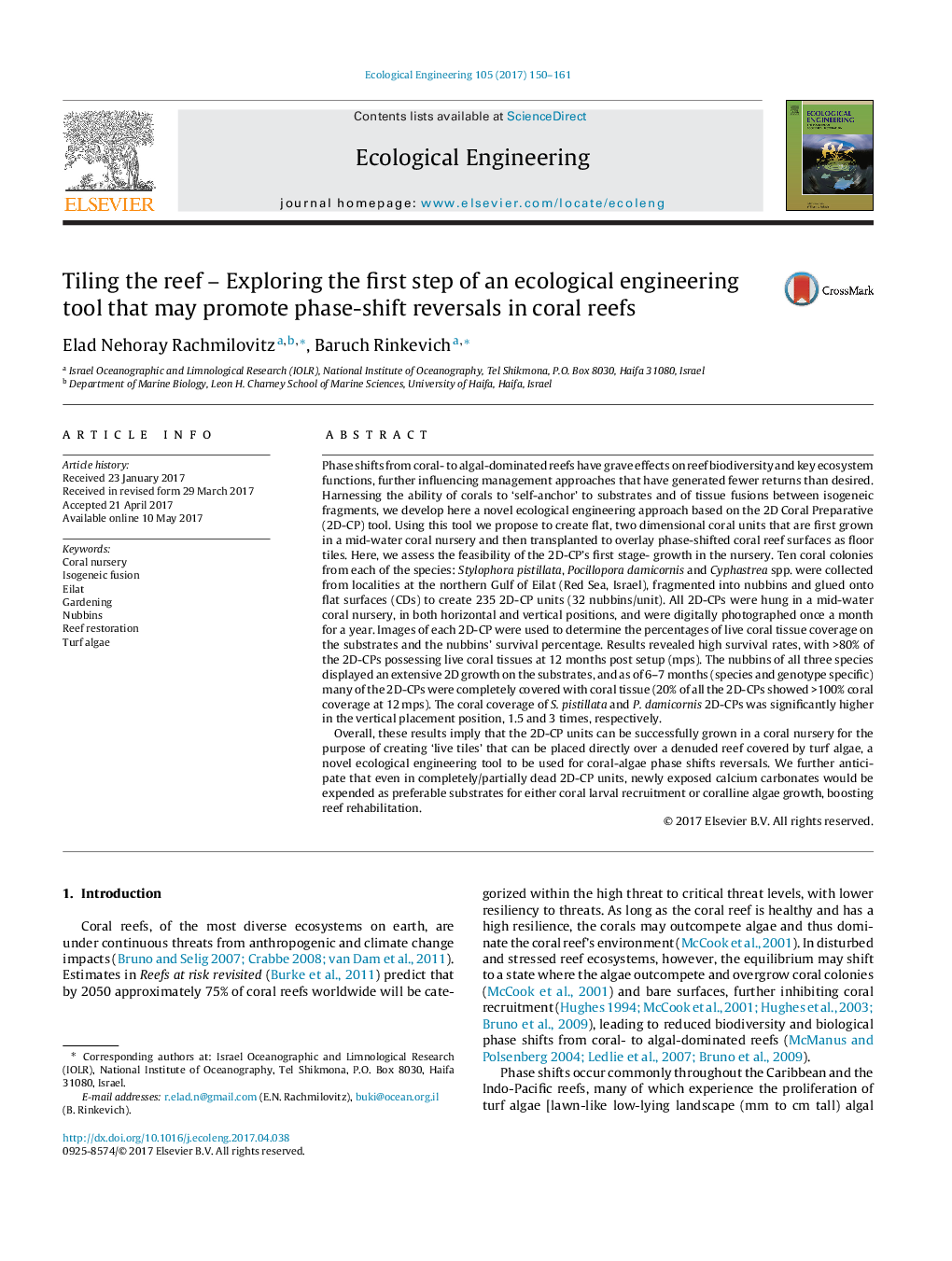| کد مقاله | کد نشریه | سال انتشار | مقاله انگلیسی | نسخه تمام متن |
|---|---|---|---|---|
| 5743608 | 1617996 | 2017 | 12 صفحه PDF | دانلود رایگان |
Phase shifts from coral- to algal-dominated reefs have grave effects on reef biodiversity and key ecosystem functions, further influencing management approaches that have generated fewer returns than desired. Harnessing the ability of corals to 'self-anchor' to substrates and of tissue fusions between isogeneic fragments, we develop here a novel ecological engineering approach based on the 2D Coral Preparative (2D-CP) tool. Using this tool we propose to create flat, two dimensional coral units that are first grown in a mid-water coral nursery and then transplanted to overlay phase-shifted coral reef surfaces as floor tiles. Here, we assess the feasibility of the 2D-CP's first stage- growth in the nursery. Ten coral colonies from each of the species: Stylophora pistillata, Pocillopora damicornis and Cyphastrea spp. were collected from localities at the northern Gulf of Eilat (Red Sea, Israel), fragmented into nubbins and glued onto flat surfaces (CDs) to create 235 2D-CP units (32 nubbins/unit). All 2D-CPs were hung in a mid-water coral nursery, in both horizontal and vertical positions, and were digitally photographed once a month for a year. Images of each 2D-CP were used to determine the percentages of live coral tissue coverage on the substrates and the nubbins' survival percentage. Results revealed high survival rates, with >80% of the 2D-CPs possessing live coral tissues at 12 months post setup (mps). The nubbins of all three species displayed an extensive 2D growth on the substrates, and as of 6-7 months (species and genotype specific) many of the 2D-CPs were completely covered with coral tissue (20% of all the 2D-CPs showed >100% coral coverage at 12Â mps). The coral coverage of S. pistillata and P. damicornis 2D-CPs was significantly higher in the vertical placement position, 1.5 and 3 times, respectively.Overall, these results imply that the 2D-CP units can be successfully grown in a coral nursery for the purpose of creating 'live tiles' that can be placed directly over a denuded reef covered by turf algae, a novel ecological engineering tool to be used for coral-algae phase shifts reversals. We further anticipate that even in completely/partially dead 2D-CP units, newly exposed calcium carbonates would be expended as preferable substrates for either coral larval recruitment or coralline algae growth, boosting reef rehabilitation.
Journal: Ecological Engineering - Volume 105, August 2017, Pages 150-161
